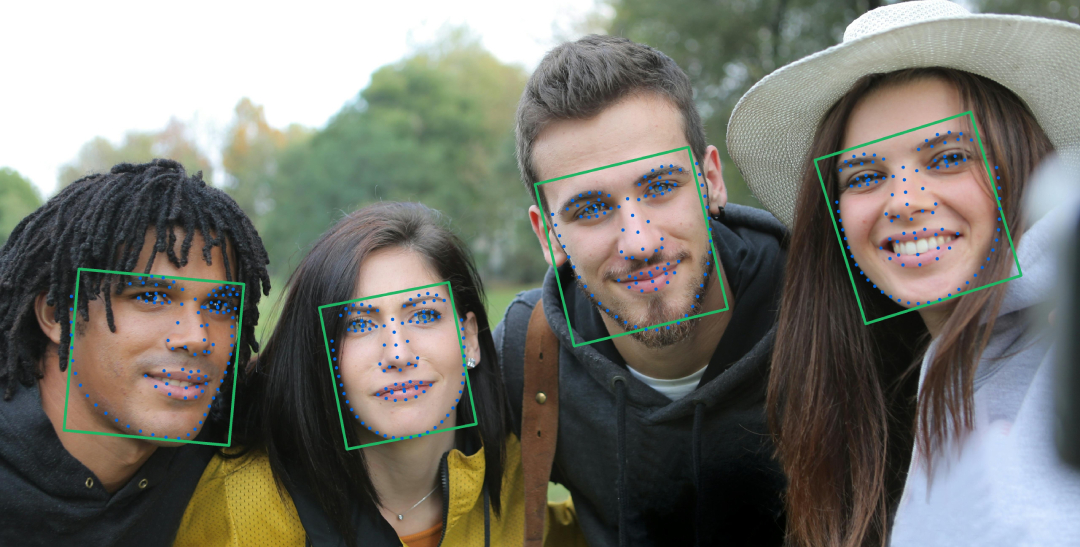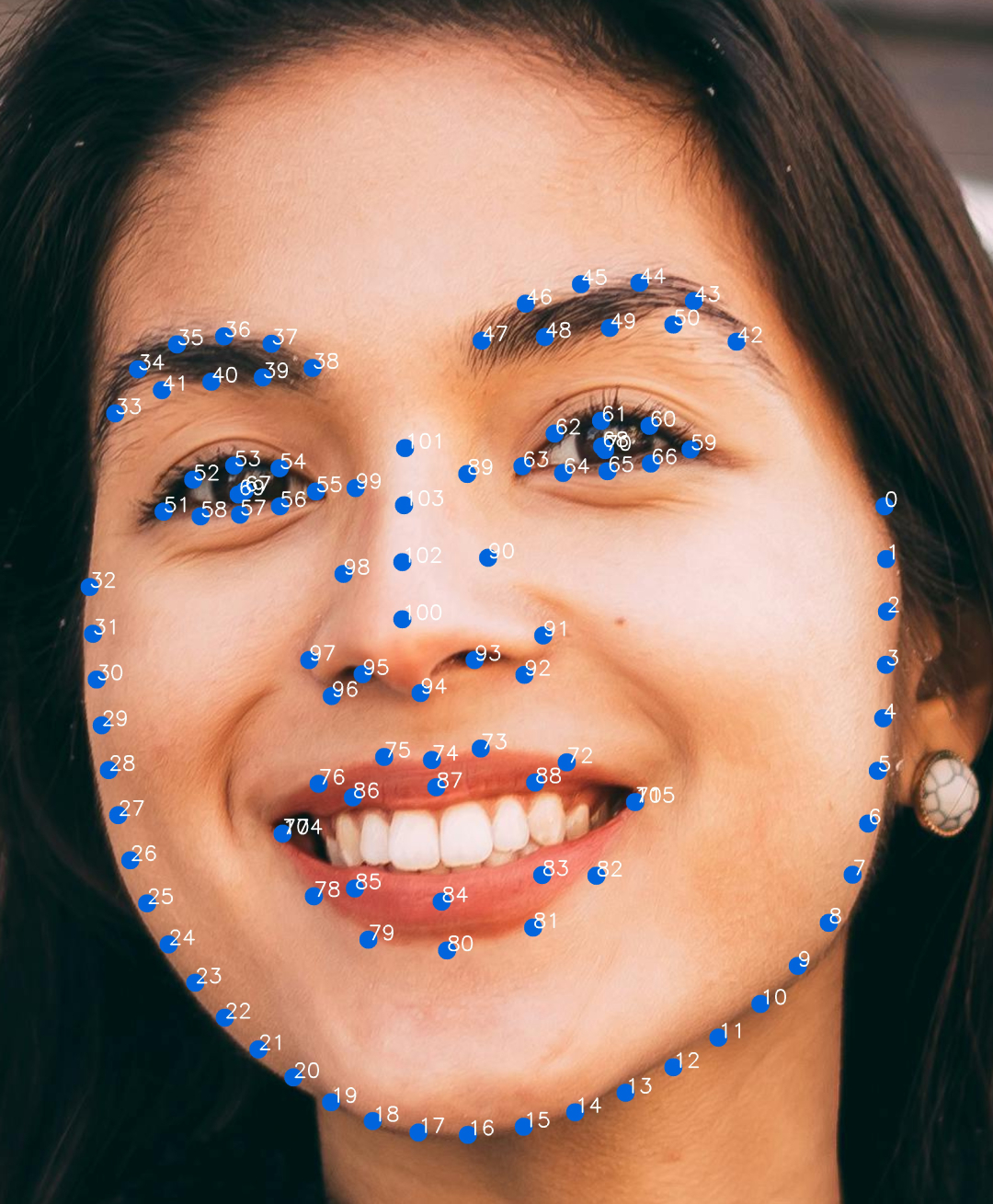Dense Facial Landmark Prediction
We offer the latest HyperLandmarkV2, a high-precision facial landmark detection model optimized for mobile devices. It is designed for seamless integration with AR cameras, beauty filters, and skin analysis applications. On mid-range iOS and Android devices, it achieves an average inference speed of 1ms per frame, delivering real-time performance without compromising accuracy.

Usage
Python
faces = session.get_face_dense_landmark(image)
for face in faces:
landmarks = session.face_landmark(face)
C
HInt32 numOfLmk;
HFGetNumOfFaceDenseLandmark(&numOfLmk);
HPoint2f* denseLandmarkPoints = (HPoint2f*)malloc(sizeof(HPoint2f) * numOfLmk);
HFGetFaceDenseLandmarkFromFaceToken(multipleFaceData.tokens[index], denseLandmarkPoints, numOfLmk);
C++
auto dense_landmark = session->GetFaceDenseLandmark(result);
Android
Point2f[] lmk = InspireFace.GetFaceDenseLandmarkFromFaceToken(multipleFaceData.tokens[0]);
Landmark Points Order
We provide a set of dense facial landmarks based on a 106-point standard. The following diagram shows the mapping between landmark indices and their corresponding facial regions.

